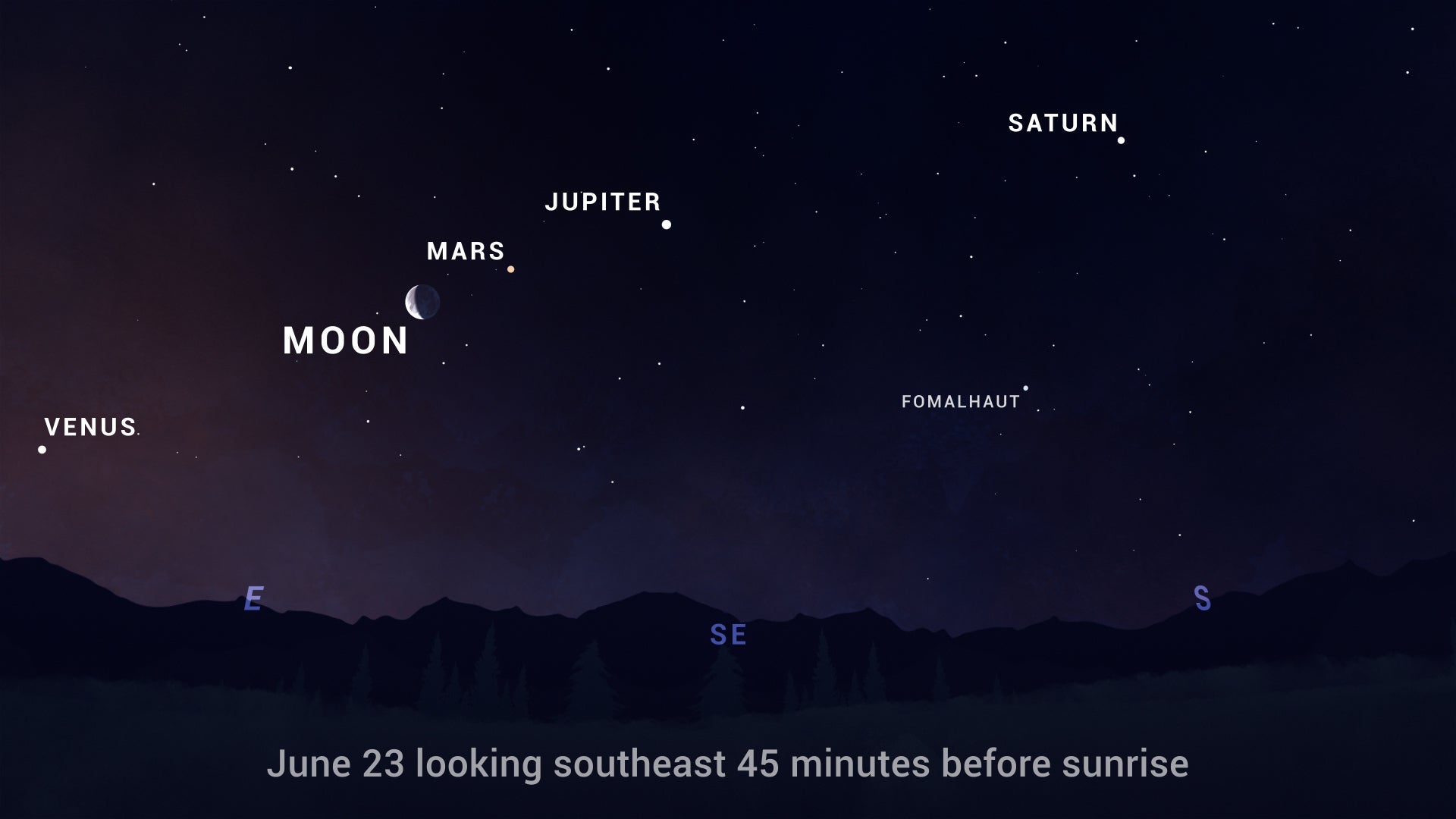Why Friday morning is the best time to view a rare planetary alignment
Friday could be last, best chance to catch a rare alignment of five planets in the sky, plus a special guest.

Your support helps us to tell the story
From reproductive rights to climate change to Big Tech, The Independent is on the ground when the story is developing. Whether it's investigating the financials of Elon Musk's pro-Trump PAC or producing our latest documentary, 'The A Word', which shines a light on the American women fighting for reproductive rights, we know how important it is to parse out the facts from the messaging.
At such a critical moment in US history, we need reporters on the ground. Your donation allows us to keep sending journalists to speak to both sides of the story.
The Independent is trusted by Americans across the entire political spectrum. And unlike many other quality news outlets, we choose not to lock Americans out of our reporting and analysis with paywalls. We believe quality journalism should be available to everyone, paid for by those who can afford it.
Your support makes all the difference.Friday could be the best day for early risers in North America to catch a rare celestial event: the alignment of five planets in order of their distance from the Sun.
Since the beginning of June, Mercury, Venus, Mars, Jupiter and Saturn have traced an elliptic arc in the East to Southeastern sky just before and after dawn. But Friday Morning will see a new addition to the line up, a crescent Moon will rise in the space between Venus and Mars, a proxy for Earth in the planetary procession.
So long as conditions are clear, all the planets should be visible with the naked eye just before dawn, which is 5.12am EDT for observers around Washington, D.C.
The Moon hasn’t been entirely absent from the morning view, and will appear in the sky to the right of Mars on Wednesday morning. Thursday morning will see the Moon take its place between Venus and Mars, but the alignment won’t show the perfect balance to be seen on Friday morning.
It may be the last, best chance to view this planetary alignment for some time.
The last time the five planets were aligned in the dawn sky was 2004, according to the American Astronomical Society. As summer grows older, Jupiter and Saturn will move further away from the inner planets, eventually moving out of the morning sky by September.
Join our commenting forum
Join thought-provoking conversations, follow other Independent readers and see their replies
Comments